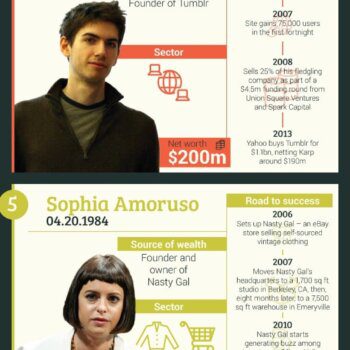Over the past year, the fintech industry has transformed from a hypothetical hotspot to an actual one.
Fintech’s obituary has been written many times, but it’s thriving. In 2012, the sector was simply called “financial innovation” or “financial online services” and only in 2013 did we first hear the word “fintech,” along with the hope that the sector could be a hotbed for unicorns.
There are now 18 fintech companies in the “billion-dollar club,” and fintech conferences and hackathons have become incredibly commonplace.
And even if you’re skeptical of the staying power of unicorns, here are four other trends that show fintech is alive and well.
1. Asia is moving fast
The fintech wave may have started in the US and further refined in Europe, but it is in Asia that the true potential of the sector is becoming evident.
The large populations, sub-par banking infrastructure, and proliferation of cheap smart devices has given countries like China, India, and Indonesia prominence on the fintech scene that is hard to deny. Add to this the pro-entrepreneur stances of government in financial hubs like Singapore, Hong Kong, and Korea, and you get a perfect storm of circumstance that is contributing to a massive fintech boom across the continent.
Leading the way in Asia is the remittance business, with India, China, and the Philippines all transacting billions of dollars a year in remittances alone. In the year ahead, I foresee more nuanced fintech services targeting needs beyond basic billing and banking services. I also see legacy banks getting in on the fintech game and investing heavily into new technologies and new initiatives.
2. Social has failed to hijack fintech
We’ve heard a lot of talk over the past year about how social networks and messaging would begin to integrate fintech solutions into their platforms, allowing for a more seamless implementation of finance services into technologies that people are familiar with.
Quite simply, the revolution didn’t happen, and, in the absence of new players, former leaders (such as TransferWise, Azimo, CurrencyCloud, Remitly, Dwolla, etc.) continued to expand into new countries and currencies.
There was one exception to the rule, however: Chinese messaging service WeChat. The Tencent-owned service is the Swiss Army knife of messaging platforms, integrating things like an e-commerce platform, micro-payment ability, and a full suite of finance services all within the app itself.
Time will tell if companies like Facebook-owned Messenger and WhatsApp or smaller apps like Naver-owned Line will begin widespread implementation of financial services.
I have a hunch, though, that the journey to a full-fledged global fintech-powered messaging service is still many, many years away.
3. Crowdinvesting and crowdfunding continue strong
We have only hit the tip of the iceberg with crowdfunding.
According to various sources, including a study done by Massolution, VC money is starting to stagnate while investments via crowdfunding platforms have skyrocketed.
Another major growth area will be equity crowdfunding that will see more individuals investing directly into companies at the growth stages instead of waiting for an IPO.
As a passionate fintech evangelist, I believe crowdfunding is one of the great things the fintech revolution has created. Platforms like KickStarter and Indiegogo are just the beginning. The beauty of the crowdfunding model is just how simple and adaptable it is. You ask for an investment, offer an incentive, and let supply and demand do the rest. It’s gloriously capitalistic.
Digging deeper still, once crowdfunding by everyday people into startups becomes more commonplace, the effect it will have on the established VC model will be truly profound.
As a fintech VC, I guess it is a bit melancholic, but we too are slaves to market forces.
4. Blockchain is picking up momentum
Blockchain is dead … long live blockchain.
So, the Bitcoin party seems to be over, with analysts and industry insiders circling its carcass like buzzards in the hot desert sun to see if it comes back to life.
My money is on the buzzards.
However, while Bitcoin itself may have crashed and burned, the underlying blockchain technology powering it has huge amounts of potential.
Recently, the US Securities and Exchange Commission approved a plan to issue company stock via blockchain. This opens it up to whole new world of possibilities, including disrupting the way stocks are issued and traded.
While we cannot assume to know the end goal for blockchain tech, some immediate applications I see lie in tasks like remittances and currency conversion, cloud bank processing and ABS, solutions for art-banking (provenance and value of paintings, joint ownership, rental, etc.), and insurance.
The financial market has used the same tools and commerce methods for generations, and money as we know it is about 3,000 years old and has always taken the form of a physical manifestation of value (legal tender). Now, though, with the Internet, the way commerce works is changing, and what Netflix did to physical video sales and AWS did to bespoke server infrastructure, some key fintech company will soon do to money-based commerce.
___________________________
About the Author
Vladislav Solodkiy is head of Singapore-based fintech VC firm Life.Sreda. With a $100 million fund size, he and his team are dedicated to building a new fintech hub in Asia.





























